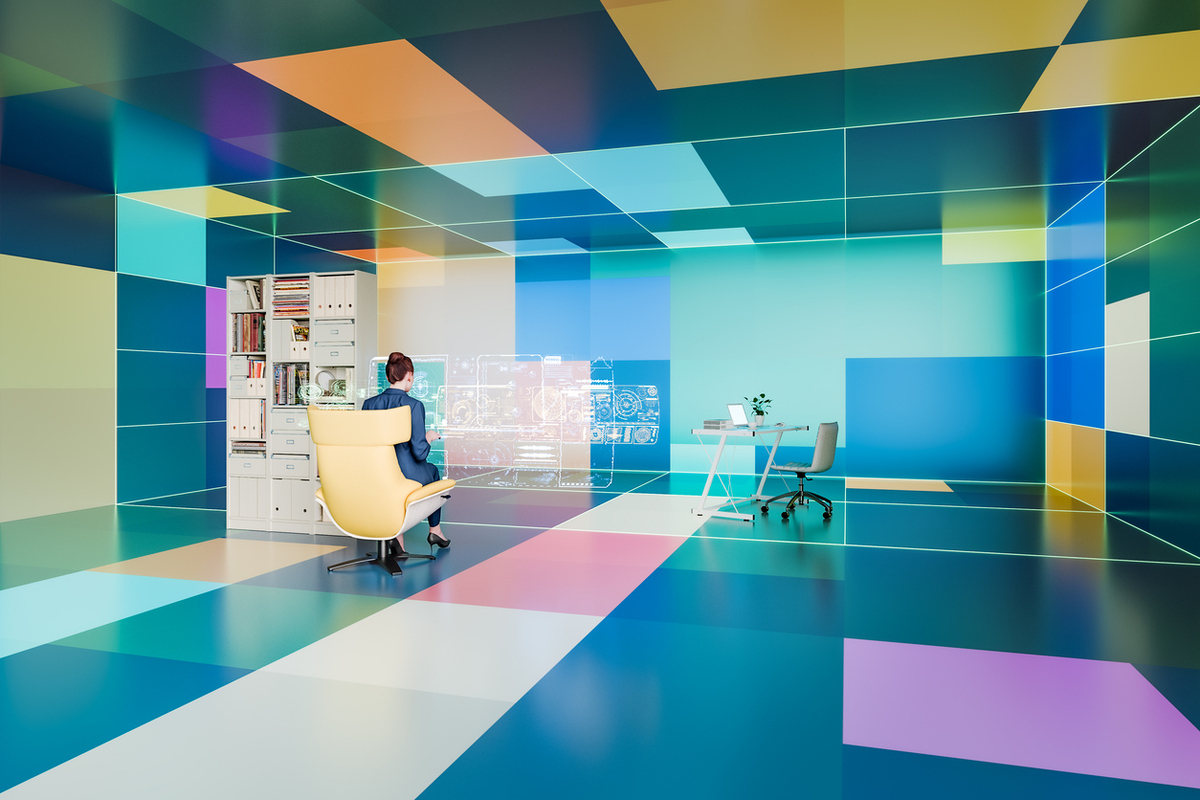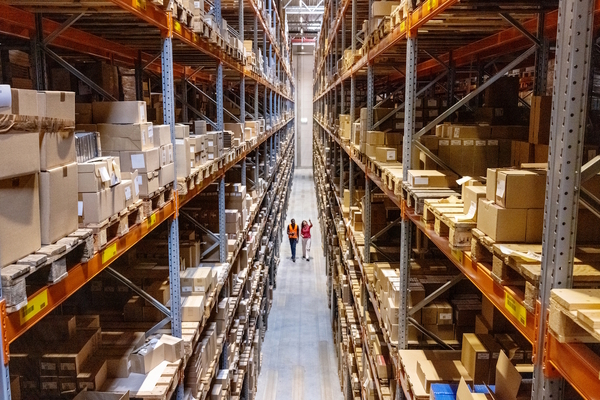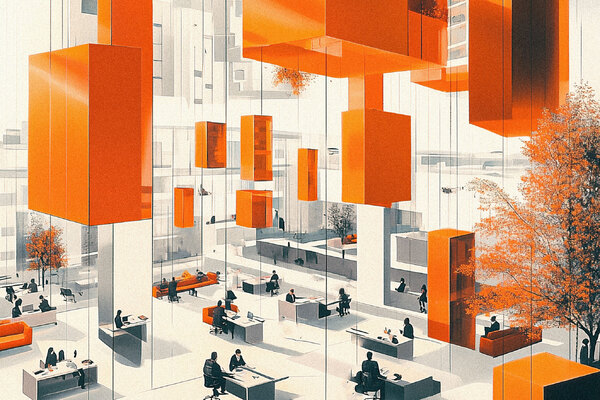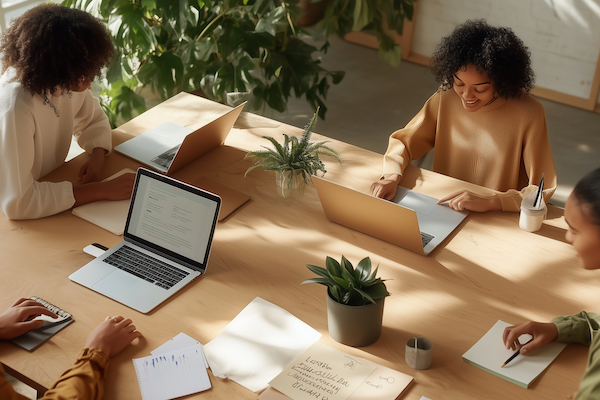Reimagining workspaces: exploring the future of office design
Sponsored by Source OneExplore cutting-edge office design trends reshaping workspaces for enhanced productivity, collaboration, and employee well-being with Source One Consulting.

As we navigate the evolving landscape of work, the significance of office design has become more pronounced than ever. Source One Consulting, a family business with a rich legacy in commercial space and office fit-out, is at the forefront of this transformation, with over 21 years in the industry.
From the rise of smart offices leveraging technology for seamless operations to the integration of sustainable practices, the nature of the workspace is changing. Dynamic layouts, biophilic designs and collaborative setups are reshaping traditional office spaces. In the era of hybrid work and personalised home offices, the significance of office design trends has never been more crucial for productivity and wellbeing.
Designing collaborative office spaces
Investing in collaborative office spaces can reap significant rewards for businesses, elevating creativity, teamwork and overall productivity. From fostering community through open designs to incorporating technology for seamless working, collaborative spaces redefine traditional office norms.
In the contemporary workspace, Source One Consulting champions the transformative influence of glass partition walls. Departing from conventional cubicles, these transparent structures strike a delicate balance between privacy and connectivity, fostering openness and collaboration. The Source One six-step guide illuminates the path towards embracing natural light’s profound impact on productivity while addressing privacy and acoustic concerns, marking a revolutionary shift in global office design. Read the source one guide on the Secrets of Modern Office Design: The Rise of Glass Partition Walls here.
Beyond open designs, incorporating flexible working areas, vibrant colour schemes and branding, leveraging technology, prioritising natural lighting, encouraging personalisation, adding greenery and introducing art contribute to an innovative and productive workspace. Despite potential challenges such as distractions and privacy issues, Source One Consulting advocates for proactive design solutions to create a harmonious and effective collaborative environment. Read our latest guide, Eight Top Tips for Designing a Collaborative Office Space
Collaborative office spaces, when thoughtfully designed, yield a multitude of benefits, including heightened creativity, improved communication, increased productivity, positive company culture and cost reduction through shared resources.
The rise of biophilic design and resimercial spaces
The incorporation of nature into office spaces is on the rise. Studies reveal a 15 per cent productivity boost when nature becomes an integral part of the workspace. The concept of “resimercial” designs, blending residential comfort with commercial functionality, is also gaining popularity.
Integrating nature into office spaces offers significant advantages, enhancing productivity and wellbeing. Initially seen as unconventional, the incorporation of natural elements is now popular in the corporate world. Exeter University’s study showed a 15 per cent increase in productivity with small houseplants in workspaces, aligning with the biophilia hypothesis, which suggests a connection to nature enhances focus and critical thinking. The harmonious blend of natural sounds, materials and light contributes to a positive work environment. Mental health benefits, such as stress reduction, supported by research, emphasise the positive impact of a nature-infused workplace.
Indoor plants also improve air quality, reducing sickness-related absences. The positive impacts extend beyond individuals to benefit the entire company, making biophilic design a valuable investment in employee wellbeing and productivity. Read Source One’s Top Tips for Bringing Nature into the Workplace.
Is hybrid office design the future?
The way we see workplaces is undergoing a profound shift, and hybrid office design is at the forefront of this transformation. As remote work gains traction, the concept of hybrid offices is becoming increasingly mainstream, offering a blend of in-person and remote work for enhanced flexibility and productivity.
Before the pandemic, only a small percentage of the UK workforce embraced remote work, but around 24 per cent have now adopted hybrid practices. This shift has prompted businesses to reimagine office spaces to cater to this new way of working.
A hybrid office design integrates face-to-face interactions with remote work, providing tangible benefits regardless of the employee’s location. Configurable office furniture, Wi-Fi-enabled spaces with high-speed broadband and a mix of private and collaborative areas characterise these innovative workspaces. Such designs aim to optimise productivity and talent retention.
The flexibility of hybrid offices comes with challenges, including the need to find a balance between in-office and remote work. Research suggests that while 70 per cent of executives prefer employees to spend at least three days per week in the office, many workers desire three days at home. Striking a compromise is crucial for successful implementation.
The benefits for employees in hybrid offices are substantial. They include improved work-life balance, greater flexibility in choosing where to live, cost savings on commuting and the ability to manage chronic health conditions. Additionally, hybrid setups allow for in-person interactions, fostering a sense of connection and preserving the energy of the office environment.
However, establishing a successful hybrid office isn’t without its challenges. Encouraging employees to come to the office, maintaining corporate culture and addressing practical issues such as desk allocation and collaboration, remain hurdles that require careful consideration.
To navigate these challenges, businesses should adopt best practices in hybrid office design. This includes adopting a coaching mindset for management, defining outcomes instead of micromanaging processes, setting clear hybrid working policies, providing training for employees, using appropriate digital tools and adapting office spaces to support virtual collaboration.
As workplace attitudes continue to evolve, the hybrid office design represents a dynamic solution that combines the best of both remote and in-person work, fostering productivity, flexibility and a positive work environment. Read Source One’s insights into hybrid office design
Why is office lighting important?
Office lighting is a cornerstone of interior design, influencing employee health, productivity and the overall ambiance of a workspace. Source One Consulting recognises the pivotal role lighting plays and offers expert guidance from audit to design and installation. Lighting is a crucial element, whether embracing the latest in LED technology or incorporating smart controls. Source One Consulting’s commitment to crafting optimal lighting setups aligns with its mission to transform workspaces into vibrant, efficient environments. Read Source One’s Best Office Lighting Solutions: A Quick Guide
Conclusion
Innovative office design can empower businesses to boost productivity and employee wellbeing, revolutionising workspaces for a brighter, collaborative future. Source One Consulting emerges as a beacon in the ever-changing landscape of office design, prioritising employees and delivering innovative solutions. Experience the future of office design with Source One Consulting.
Visit www.sourceoneconsulting.co.uk for a free consultation and discover how Source One’s expertise can revolutionise your workspace, fostering productivity, collaboration and employee wellbeing.

Business Reporter Team
Most Viewed
Winston House, 3rd Floor, Units 306-309, 2-4 Dollis Park, London, N3 1HF
23-29 Hendon Lane, London, N3 1RT
020 8349 4363
© 2025, Lyonsdown Limited. Business Reporter® is a registered trademark of Lyonsdown Ltd. VAT registration number: 830519543





